I love trying the latest food trends but what I don't love is their often unknown effects on the environment. About one-third of the world’s land is forests. Every year, this area decreases by an average of 13 million hectares, which corresponds to around 35 football fields per minute, mainly due to agriculture.
So much of what we consume daily has effects that reach far beyond our bellies, but if we aren't aware of them, how can we do anything to help fix it? So let's take a look at 9 popular food trends and their impact on our planet.
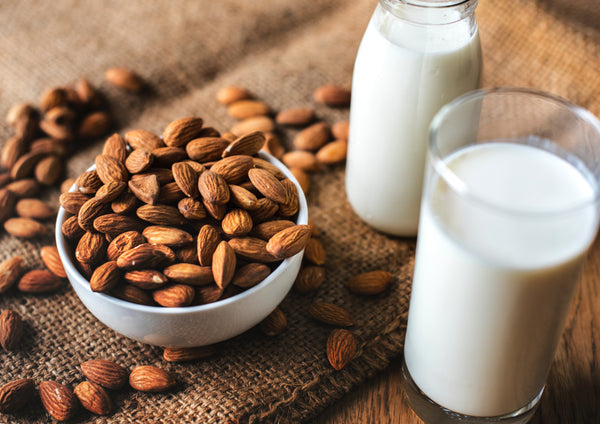
1. Almond Milk
Though no one can argue the nutritional benefits of almonds, their impact on the environment can't be overlooked. It takes over 15 gallons of water to produce just 16 almonds, or 100 liters of water per 100ml of almond milk. Not to mention the amount of water added to make almond milk in general.
Why This Matters
More than 2 billion almonds are produced in California, which has been in a severe drought for the past decade. The majority of these almonds are grown in San Joaquin Valley, which has been sinking each year due to groundwater depletion, so additional wells used to irrigate almond orchards are negatively impacting residents who rely on groundwater as a source for drinking.
This problem is worsened by the use of pesticides in commercial farming that is contaminating the already limited water supplies. The USDA Pesticide Data Program detected 9 different pesticides on almonds alone, 5 of which are toxic to honey bees, thus further threatening the environment. Lastly, there's also the impact of land in general. As of 2016, over 23,000 acres of natural lands have been converted to almond farms, with 16,000 of those acres being wetlands.
How You Can Help Ease the Impact:
- Know Your Options. Opt for other nondairy milks such as oat milk, hemp milk, or even pea milk.
- Make Your Own. On top of the water used to grow almonds, store-bought almond milk is made up of mostly water and it's not as nutritional as you might think. By making almond milk at home, you can at least create less waste by controlling how much water you use. This recipe by Zero Waste Chef takes it one step further and shows you how to repurpose leftover pulp to make a simple almond flour :)
- Buy Organic. Organic farming uses more sustainable farming methods (i.e., less water) as well as no pesticides, which is not just important for us, but also for the bees and water sources mentioned above, so always buy organically grown almonds if you can afford to.
- Stay in the Know. The Almond Board of California, a nonprofit organization, has proposed a plan to reduce water consumption, waste and chemicals by 2025. You can keep up with their latest research and results on their website.
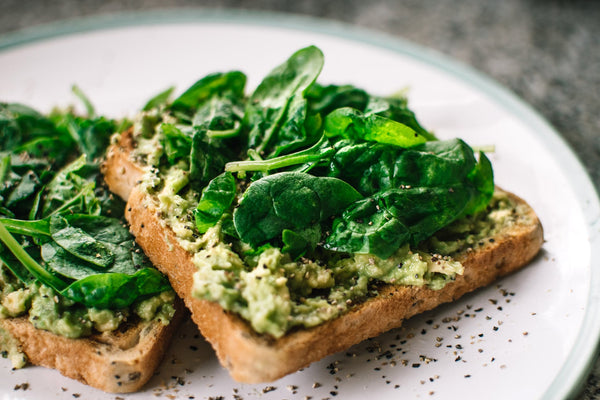
2. Avocado Toast
This is a tough one for me because I LOVE avocado toast and avocados in general. So much so that I used to eat them on their own with a sprinkle of salt, pepper, and olive oil as an afternoon snack. But I've reduced how many I eat after learning more about their impact on the environment and small farmers.
80% of the avocados sold in the U.S. are grown in the Michoacán Mountains Mexico, where the production and planting of avocado trees require 2x as much water as a dense forest, meaning less water reaches the mountain streams on which the trees and animals depend. According to Mexico's National Institute for Forestry, avocado production tripled between 2001 and 2010, resulting in a loss of approximately 1,700 acres of forest land per year. Per year! And they still weren't able to keep up with the U.S. demand.
Why This Matters
This increase in demand has resulted in a lucrative market for Mexico's drug gangs, causing a spike in illegal deforestation, which negatively impacts not just the trees, but also natural wildlife as the state’s forests contain much of the wintering grounds of the monarch butterfly. Another issue with avocado production, according to Greenpeace Mexico, is the use of chemicals and large amounts of wood needed to pack and ship them to other countries.
Now, I wish I could say that buying avocados from California or Chile is better for the environment, but those grown in these areas actually use the most amount of water. Not to mention in Chile, another drought-stricken region, large producers have “used so much of the region’s waters that small farmers with shallow wells—and some nearby towns—are left with no water."
How You Can Help Ease the Impact:
- Consume Mindfully. I used to eat an avocado almost daily. Now we limit ourselves to a couple avocados a week with breakfast, which Aman and I split, and try our best to resist ordering a side of avocado with everything when we eat out.
- Waste Not. If we're buying them, then the best thing we can do is make sure we use them! For tips on how to store your avocados and extend their shelf life, check out this post.
- Avoid Large Producers. It can be hard to know where our avocados are coming from but when you can, try avoiding large producers as they are typically the culprits for mass deforestation and chemical use, especially in Chile and Mexico. Equal Exchange partners with small farmers in Mexico, which helps mitigate some of these concerns. There are also a few other Fairtrade certified avocado farmers but it's unclear where you can find their products at this time.
- Get Creative! Here are some recipes to help you use less avocado ;)
- Pea-Mash Toast
- Guacamole. Use fewer avocados by adding mango, peach and/or papaya to help fill out the dish.
- Are your avocados too ripe? Try this chocolate pudding recipe!
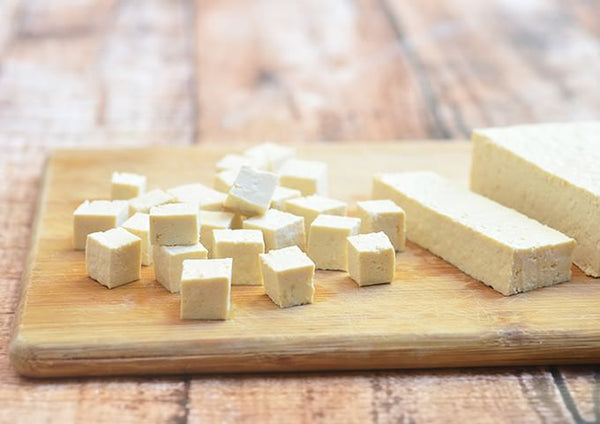
3. Tofu (Soy)
In South America, the leading producer of soy in the world, soy farming is driving deforestation and the destruction of Brazil’s Cerrado grasslands, which houses over 3,000 unique plants, mammals, birds, reptiles and amphibian species. It's almost three times the size of Texas, and half of this precious land has been converted into cropland and pasture largely due to the soy industry.
Why This Matters
This destruction of surface vegetation has released 248 million tonnes of greenhouse gas into the atmosphere in 2016, according to estimates by the Climate Observatory, a Brazilian conservation group. Environmentalists also say vanishing creeks are threatening the nation's water supply due to agriculture. To make matters worse, only about 6% of soybeans grown are used for human consumption, with 75% used for animal feed, and the remaining for biofuel.
Unfortunately, soy produced in the U.S. isn't off the hook either. More than 90% of the soy grown in America is genetically modified to withstand glyphosate, a highly toxic herbicide that's classified as a probable carcinogen, which has been detected in our water supply and in the bloodstreams of most Americans. Fortunately, organizations like Greenpeace International and the World Wildlife Foundation are pushing for corporations to protect our environment.
How You Can Help Ease the Impact:
- Shop Local. Opt for tofu that is made in the U.S. with organic and NON-GMO Project Verified soybeans, such as Nasoya and Wildwood Sprouted Tofu.
- Avoid Ordering. I try to limit ordering tofu at restaurants or in takeout as it's hard to know where it's coming from and if it's GMO-free.
- Use Your Consumer Power! In 2006, after Greenpeace and consumers demanded that McDonald's and other companies didn't use soy and meat that resulted in the destruction of the Amazon Rainforest, a soy moratorium was passed resulting in a huge decline in deforestation. The same is needed for the Cerrado grasslands. If we don't buy it, they won't make it! Stay on top of the story here.
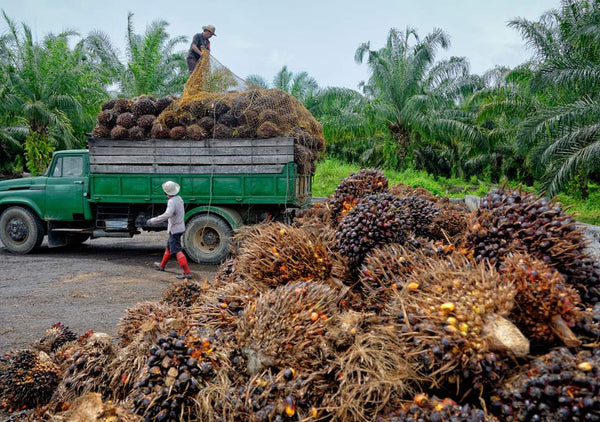
4. Palm Oil (Found in Everything!)
Palm oil is the most consumed vegetable oil. At 66 tons yearly, it's also the most commonly produced and found in more than half of all grocery store products. Though you may not have a jar of it in your pantry, it's often found in many packaged foods, chocolates, butters, gluten-free alternatives, and even body care products and detergents.
Why This Matters
Palm oil is one of the leading causes of deforestation in the world, resulting in nearly a 50% reduction of the orangutan population in Indonesia, the largest producer of palm oil. The Borneo elephant and Sumatran tiger are also being pushed closer to extinction as their home is being destroyed. The clearing of these rainforests not only affects the animals living there, but it also leads to increased carbon emissions from the C02 stored in the trees, and negatively impacts biodiversity, water sources and the indigenous people, who are often forcibly removed from their lands for expansion of palm oil plantations. According to the Rainforest Rescue, "in Indonesia, more than 700 land conflicts are related to the palm oil industry. Human rights violations are everyday occurrences, even on supposedly “sustainable” and “organic” plantations."
How You Can Help Ease the Impact:
- Check Your Labels. If they contain palm oil, find an alternative that doesn't. Here are common names often used for palm oil:
- Palm Kernel, Palm Kernel Oil, Palm Fruit Oil, Palmate, Palmitate, Palmolein, Glyceryl, Stearate, Stearic Acid, Elaeis Guineensis, Palmitic Acid, Palm Stearine, Palmitoyl Oxostearamide, Palmitoyl Tetrapeptide-3, Sodium Laureth Sulfate, Sodium Lauryl Sulfate, Sodium Kernelate, Sodium Palm Kernelate, Sodium Lauryl Lactylate/Sulphate, Hydrated Palm Glycerides, Ethyl Palmitate, Octyl Palmitate, Palmityl Alcohol
- Don't Fall for Greenwashing. Many organic foods contain the RSPO seal for sustainably sourced palm oil. However, according to Greenpeace International, RSPO-certified producers are continuing to clear tropical rainforests and expanding rapidly. This is one ingredient that we stay away from completely, as there isn't a sustainable option. To learn more about the RSPO's greenwashing, check out these articles by Friend's of the Earth International and World Rainforest Movement.
- Know the Culprits. The Union of Concerned Scientists created a palm oil scorecard to help consumers know which fast foods companies, individual brands, and stores are committed to stopping deforestation.
- Spread the Word. Big businesses would love for us to believe that palm oil is sustainable. Stay informed and share this information with family and friends to help reduce palm oil consumption. Again, if we don't buy it, they won't produce it.

5. Grass-Fed Beef
Americans have cut their beef consumption by 19% over the past 10 years, which according to the National Resource Defense Council, is equivalent to the tailpipe emissions created by 39 million cars in one year! There's still work to be done, however, as we still consume more beef than any other country, accounting for nearly half of American's daily footprint.
Why This Matters
While grass-fed beef is better for the animals and helps reduce the need for soy-based feed, beef is still responsible for over 70% of deforestation in Latin America, and for twice as much deforestation as soy, palm oil, and wood products combined. Even in places where beef is not a major driver of deforestation, such as North America, it's still a leading cause of global warming, due to the large amounts of methane and nitrous oxide released from cattle's digestive systems. Just to put that into perspective, nitrous oxide is a climate-warming pollutant 298 times more powerful than carbon dioxide.
How You Can Help Ease the Impact:
- Start Small. If you're a big beef eater, start small by going meatless one day a week and working your way up from there. Every small step makes a positive impact on the environment and your health!
- Buy Wisely. When you have to eat it, look for organic grass-fed beef, which doesn't require deforestation for soy-based feed and is free of antibiotics and growth hormones.
- Reduce Your Serving Size. If you're used to eating a double cheeseburger, try ordering a single, or reduce the number of meatballs you put on your spaghetti. Pause to think about how much meat you usually eat before meals and try replacing a portion with plant-based foods. This will allow your stomach a chance to feel full on less meat and more greens. Tip: Try adding spirulina into your smoothies for an extra protein boost!
- Get Creative! Americans eat 10 billion burgers annually. If we replace 30% of the beef with mushrooms, it would:
- Save as many emissions as taking 2.3 million cars off the road
- Conserve as much water as 2.6 million Americans use at home every year
- Reduce agriculture land demand by an area larger than Maryland

6. Coffee
I'm sorry to report this coffee lovers, but the global water footprint of a 125ml cup of coffee is 140 liters. And with the world's population estimated to reach almost 9.8 billion by 2050, the environmental impact is greater than ever.
Why This Matters
To meet the increased demand for coffee, due to sheer population growth, traditional coffee-growing methods that depended on the shade of forest canopy and supported local wildlife were slowly replaced with a hybrid coffee plant that required toxic agrochemicals and full-sun exposure, forcing many farmers to cut down forests and abandon their traditional ways in order to survive.
Furthermore, according to the Smithsonian's National Zoo & Conservation Biology Institute, "three-quarters of the world's coffee farms destroy forest habitat to grow coffee in the sun and often use harmful pesticides and fertilizers that poison the environment. When forests disappear, migratory songbirds disappear, too."
Not to mention the amount of plastic waste created by our daily coffee habits. According to Green Match, "the world uses up to 16 billion disposable coffee cups each year. Those cups represent 6.5 million trees cut down, 4 billion gallons of water and enough energy to power 54,000 homes for a year." Starbucks alone goes through 4 billion disposable cups annually, and to make matters worse, most coffee cups are coated in plastic to make them leak proof, often deeming them unable to be recycled.
How You Can Help Ease the Impact:
- Commit to Buying Certified Brands. Look for coffee certified by the Rainforest Alliance and Smithsonian Bird Migratory Center. It's also important to purchase coffee that is certified Fair-Trade to ensure that farmers are getting paid fair wages for their work.
- Be Conscious! Carry a reusable cup with you to help reduce waste. If you forget it, carry your cup and plastic lid with you until you find a recycling bin. Also, be mindful of how many stirrers, napkins, etc. you are grabbing by taking only what you need!
- Go Green at Home. If you make your coffee at home be sure to go green with these tips:
- Ditch the K-cups for reusable and compostable coffee pods.
- Use a reusable or compostable coffee filter.
- Compost used grounds or reuse as a fertilizer in your garden.
- Weigh your coffee to decrease waste.
- Buy Locally Grown. If able, support local coffee producers to decrease the carbon footprint of shipping from farther distances.
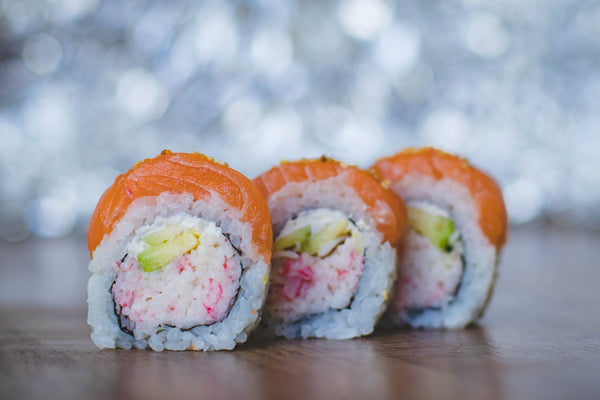
7. Sushi / Poke
I love sushi. It used to be my favorite food. But with the increase in popularity of these seaweed wrapped rolls comes one dire problem: overfishing.
Why This Matters
According to a study by UC Davis, at the rate we are going, 50% of California's salmon will be depleted in 50 years. The sushi and canned tuna industry combined have decimated global populations of bluefin tuna, with yellowfin and bigeye tuna ("ahi" tuna) also dwindling. Furthermore, with developing countries representing 50% of global fish exports, a study by the WorldFish Center found that poor countries are left with a protein gap as fish export revenues are spent on luxury goods, such as imported sushi.
To learn more about the environmental impact of sushi, check out this infographic by World Wildlife Fund, as well as this detailed report on the state of our oceans.
How You Can Help Ease the Impact:
- Limit Consumption. Limit sushi consumption to no more than once a month. I used to eat sushi three times a week when I lived in Boston, and have given up fish completely. If I can do it, so can you!
- Eat Consciously. The Seafood Watch has created consumer guides to help us know which fish are endangered or have the greatest impact on the environment. Check out their sushi guide or download their app to stay informed. Here's another guide for best sushi choices.
- Don't Over Order. How many times have you wasted sushi when you're out? I've been guilty of it myself. In order to curb waste, try ordering one roll at a time so you can truly gauge your appetite.
- Take Action. Be mindful of the fish you eat and share your knowledge with family and friends the next time you go out for sushi. If they don't know, they can't make a decision to change!

8. Greek Yogurt / Dairy
While beef consumption fell in the last decade, dairy intake increased according to a recent study by the NRDC.
Why This Matters
Butter ranks third on NRDC’s chart of 10 common climate-damaging foods. That's because it takes 21 pounds of milk to make a pound of butter. There's also the environmental impact of raising and feeding the livestock that provide the milk, which we touched on earlier.
And, when it comes to yogurt, Greek and other strained yogurts use four times more milk than regular yogurt to produce. Not to mention the increased output of whey pollution as a result of yogurt production, which is toxic to the environment. In 2008 an accidental spill of the watery substance from an Ohio dairy factory into a local creek killed more than 5,400 fish along a 1.5 mile stretch. And, I haven't even touched upon the animal abuse rampant across the industry!
How You Can Help Ease the Impact:
- Reduce Consumption. I developed a dairy allergy a few years ago and was shocked by how good my body felt within a couple weeks of giving it up. So much so, that I never even tried to go back to it. Instead, I've found some dairy alternatives that I enjoy. If you're not ready to go completely dairy-free, try eliminating it from one meal a day. Not convinced? Check out this article.
- Buy Locally + Organic. Shopping locally will at least help to offset the carbon emissions from transportation, while buying organic reduces the number of pesticides used, as well their runoff into water supplies.
- Swap Out the Butter. I use organic olive oil in place of butter in all recipes, including desserts, and they come out great :)
- Opt for Low-Fat. Low-fat dairy products have a lower carbon footprint due to their smaller density. An analysis of cheddar (63 percent milk solids) versus mozzarella (51 percent milk solids), found the mozzarella to have a lower environmental impact.
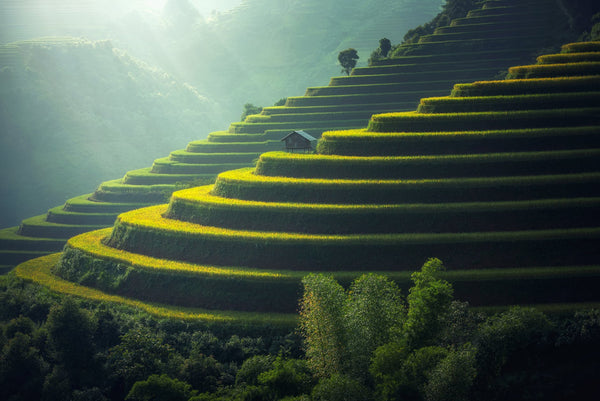
9. Rice Flour / Rice
The second largest emitter of methane after the livestock sub-sector is surprisingly rice. According to the World Resources Institute, global rice farming produces approximately the same amount of greenhouse gas emissions as Germany every year, primarily due to rotting vegetation, known as rice straw. Currently, about 60-80% of rice straw is burned by farmers, which increases these emissions, as well as air pollution associated with respiratory health problems in the area.
Why This Matters
Methane is 34 times more potent than carbon dioxide, but these emissions can be reduced by up to 70% with better farming practices. Because rice-growing consumes 40% of all irrigation water, with water shortages in most major rice-growing regions, changes in management also offer potential to conserve water. Additionally, reducing flooding in rice paddies can dramatically decrease greenhouse gas emissions, while also conserving water and boosting yields. Fortunately, organizations such as the International Rice Research Institute are working with farmers to improve training and support for implementing climate-smart farming practices.
How You Can Help Ease the Impact:
- Use Alternatives. If you're gluten-free like me, opt for other flour alternatives such as garbanzo flour, amaranth or buckwheat. I like Bob's Red Mill Organic Flours.
- Swap Your Pasta. Instead of rice-based pasta, try incorporating red lentil, black bean or pea pastas into your diet. Trader Joe's has some great, affordable options ;)
- Get Creative. Try making cauliflower rice. It's easy to cook and quite delicious!
Don't let this list overwhelm you. Small changes can have a great impact. Start with a few recommendations and work your way towards a place that is comfortable for you. Most importantly, spread the word! Knowledge is power and the more the people that know, the closer we are to achieving greater change.
As Always, Love + Light,
Smita :)
